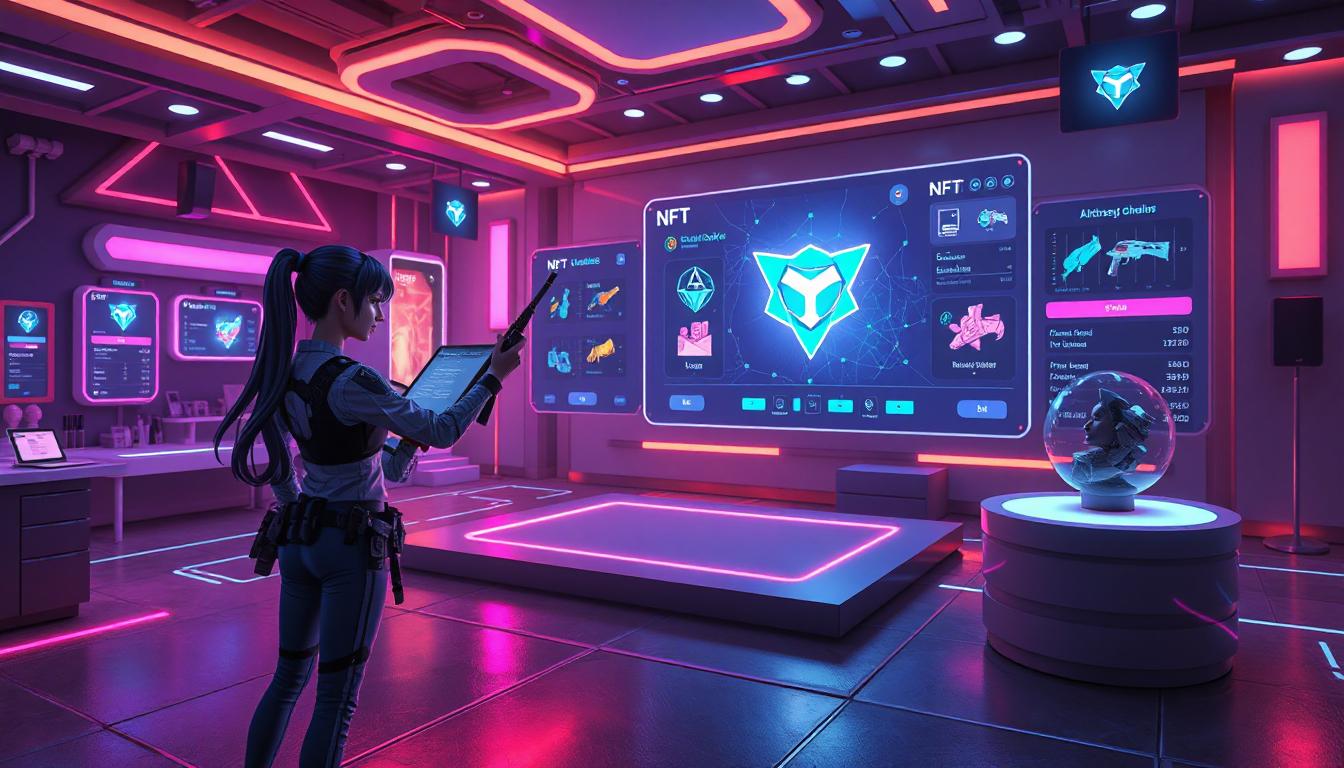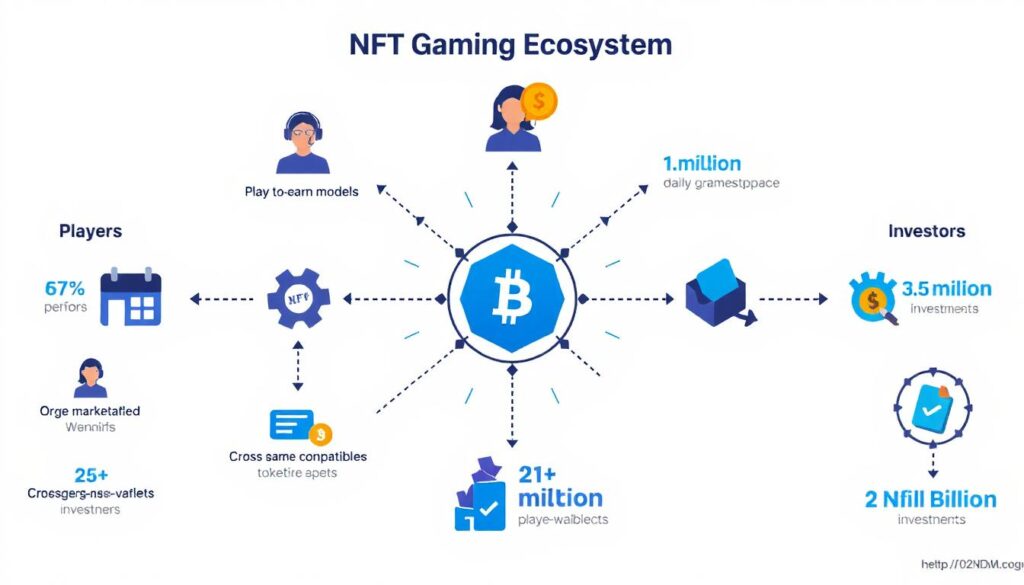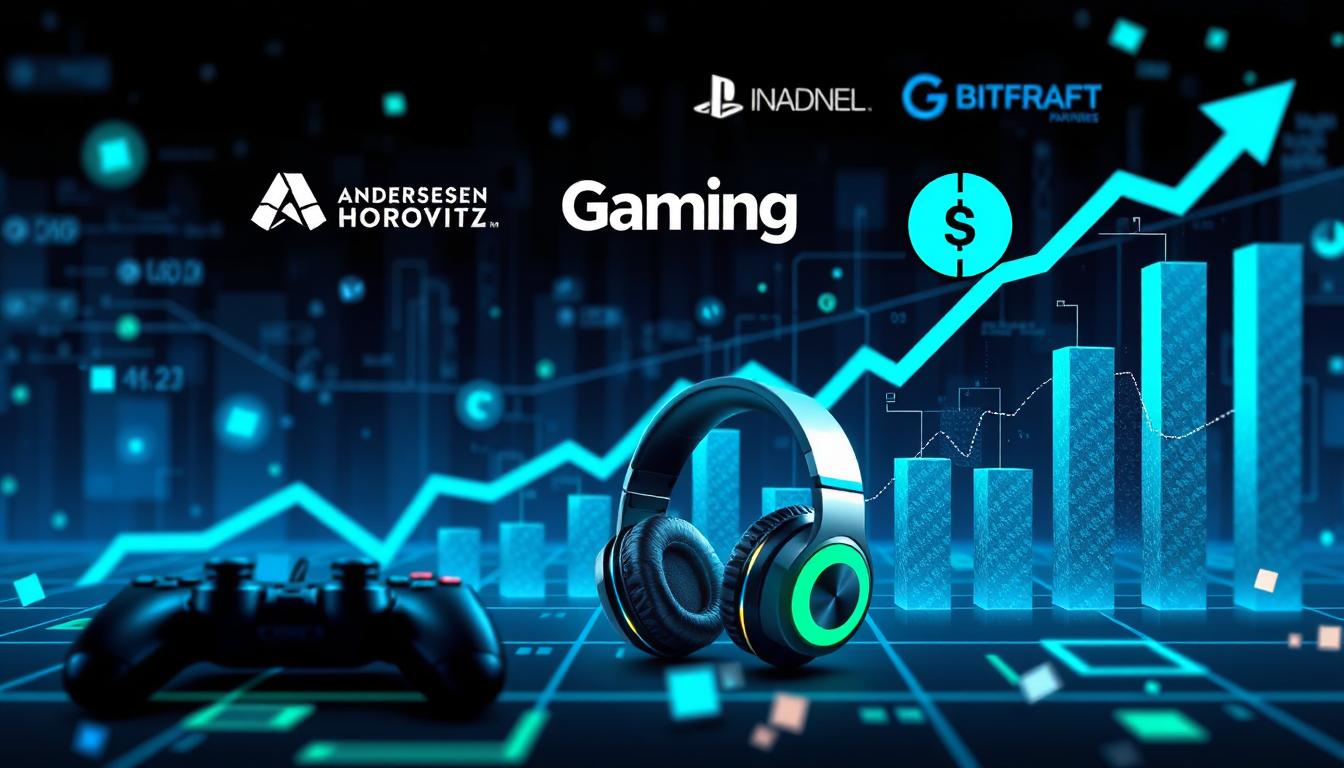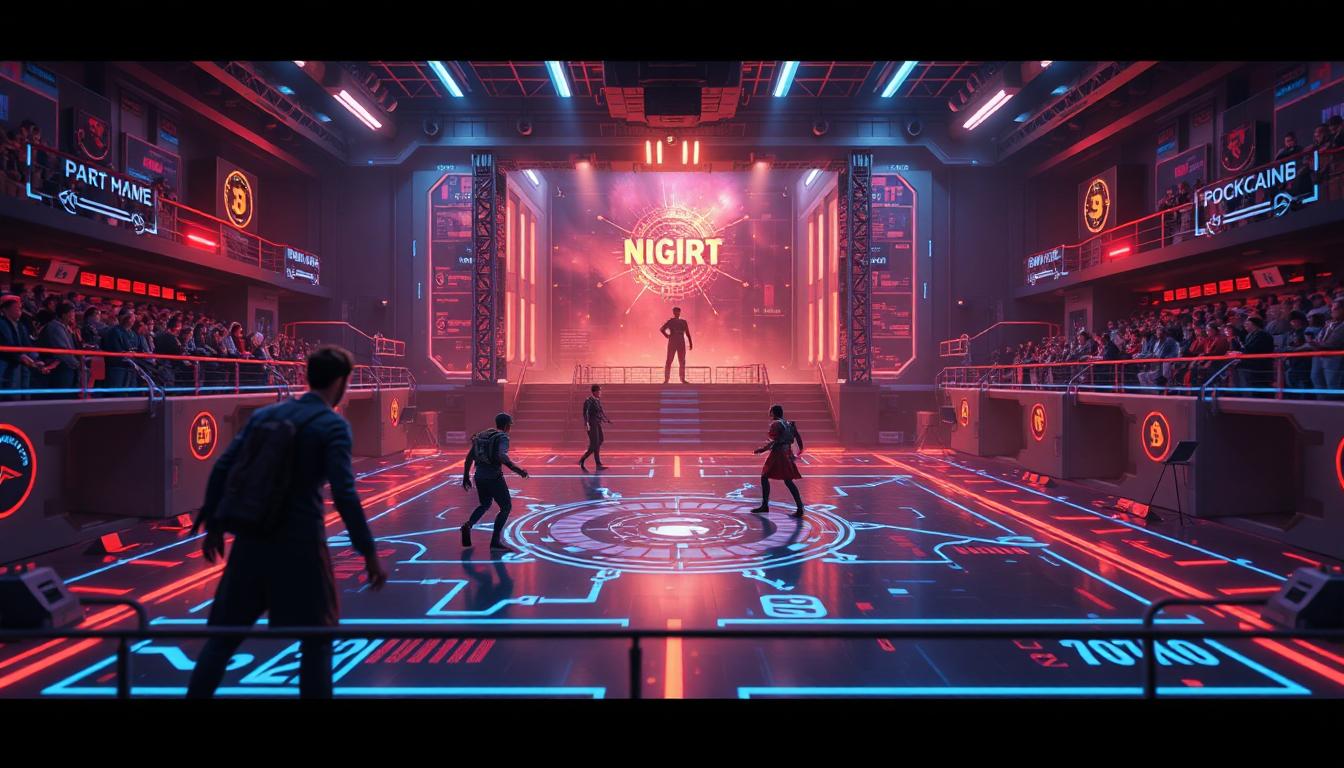
NFTs in Gaming: Unlocking Game Monetization Strategies through Blockchain, Digital Ownership, and Player Engagement
Why do so many games seem like money-grabbing scams that don’t give players much in return? The gaming industry is moving swiftly as gamers expect more transparency, digital ownership, and value for time invested. Enter NFTs in gaming, a once-laughed-at idea that is now changing game monetization tactics and paving the way for a tokenized gaming economy in which gamers may earn, trade, and even invest in addition to playing. Blockchain technology is radically altering the way games are created, promoted, and monetized, from in-game assets as NFTs to NFT marketplaces. But is there data to support this hype? Let’s dissect it.
Digital Ownership and Decentralized Gaming Ecosystems Are Gaining Ground
A significant portion of the worldwide gaming sector, which is predicted to reach $211 billion by 2025 (Statista, 2024), is directly related to blockchain gaming and virtual products like NFTs. These days, gamers expect their time, money, and effort to be converted into tangible worth; they want digital ownership. Over 1.1 million distinct active wallets engaged with blockchain games every day, accounting for 34% of all dApp activity, according to DappRadar’s 2024 Blockchain Gaming Report. Players can really own characters and weapons as NFTs in games like Gods Unchained and Illuvium, opening up new avenues for player interaction and possible revenue. Consider this: Would you work for hundreds of hours to obtain things that you don’t own? The financial and emotional commitment to gaming
Game Marketing Strategy Reimagined: Monetization with Purpose
Conventional free-to-play (F2P) models depend on microtransactions and advertisements. However, modern players are more astute. They are drawn to openness, value, and earning potential. Here’s where NFTs shine. They make it possible:
- Play-to-earn gaming models (such as Axie Infinity, which peaked in 2021 and paid gamers up to $400 per month)
- NFT dropped as a component of the launch plans
- NFT loyalty schemes that are gamified
For example, in less than six months, Thetan Arena attracted over 23 million users (BGA Blockchain Game Report 2023). What’s their secret? A free-to-play game combined with a play-to-earn strategy that incorporates NFTs to enhance player engagement and retention.
NFTs as a Catalyst for Sustainable Investment in Gaming
Cutting-edge graphics, adaptable AI, or the mobile boom are frequently brought up when talking about investment trends in the gaming sector. However, NFTs and their function in sustainable monetization models represent another important new frontier that merits equal attention.
A strong case for this can be found in Investing in the Gaming Industry: AI, Inclusivity, and the Path to Sustainable Growth, where the emphasis is placed on how modern technologies are reshaping revenue strategies. Because they empower tokenized gaming economies, offer actual digital ownership, and open up new opportunities for player-driven wealth generation, NFTs are ideally suited to this shift.
This is supported by Messari’s 2023 Gaming Investment Report, which showed that in just one year, over $2.5 billion was invested in blockchain-based gaming projects, with a significant amount going toward NFT marketplaces and cryptocurrency wallets for players. The logic is straightforward but effective: players are more inclined to stay involved, spend more money, and naturally promote the game when they acquire assets with real-world worth. Ownership and trust are the driving forces behind that sustainable growth circle.
Highlights of notable investments:
- Animoca Brands raised $110M in 2023 to fuel decentralized games
- Immutable X (behind Gods Unchained) signed 100+ developer partnerships for blockchain integration
NFTs provide a link between active player bases and speculative investment. It’s not simply technology; it’s community-driven development.

Cross-Promotion and Retention: Expanding Reach Through Tokenized Gaming Economies
Do you recall the times when you could only unlock one in-game skin? Imagine now that the object is:
- Traded on an NFT marketplace
- Used in other compatible games
- Upgraded and sold for real-world profit
That is the strength of tokenized gaming economies and cross-platform asset trading.
Take the independent game My Pet Hooligan, where your character is a playable NFT and a marketing ambassador on X (Twitter), YouTube, and Discord. These NFTs promote cross-promotion and the organic expansion of player-generated content by serving as viral tools. The Significance of It. You are not simply selling a game; you are selling an ecology, a club, a movement.
This is not a revolution in marketing; it is an evolution. NFTs are creating scalable and captivating settings where ownership motivates retention.
Comparing the Untapped Potential of NFTs to Adaptive AI in Gaming
Similar to how adaptive AI tailors gameplay for each player, NFTs reward time, rarity, creativity, and teamwork to customize game value. But whereas AI modifies your gameplay, NFTs change your place in the game economy.
41% of Gen Z gamers are more likely to play games that give NFT ownership and earnings, according to a 2024 Newzoo survey. Compared to games with conventional monetization, that is almost twice as much engagement.
Why? Because NFTs empower players as:
- Creators (user-generated content as NFTs)
- Traders (secondary markets)
- Investors (staking and DAO voting)
Realization: Players now desire power, involvement, and reward rather than just playing. The future of gaming lies in the fusion of NFT-based economics with adaptive AI. While customization is possible with both, the gamer can only earn money with NFTs.
Final Thoughts: The New Frontier of Player Engagement and Revenue Models
It won’t be long until blockchain gaming becomes popular. It has arrived and is rapidly expanding. Decentralized gaming ecosystems, ranging from play-to-earn economies to NFT marketplaces for games, are changing the way we think about community, value, and ownership in games.
The real potential of NFTs in gaming is found in resolving persistent issues rather than in being novel:
- Players want real ownership
- Studios want recurring revenue
- Communities want to co-create and co-earn
What about investors? With the support of billions in trade volume, millions of wallets, and a worldwide generation of players eager to join, it’s an unexplored goldmine.
Q&A: Your Top Questions Answered
1. How do NFTs increase gaming player engagement?
Long-term engagement is created via NFTs’ ownership and compensation structures, which maintain participants’ financial and emotional investment.
2. Which NFT-based game monetization techniques are effective?
Effective hybrid monetization leveraging NFTs for trading, loyalty, and revenue has been shown in games like Gods Unchained, Axie Infinity, and Thetan Arena.
3. Are NFTs in gaming a good investment opportunity?
As demonstrated by the billions already spent and the strong user acceptance rate among Gen Z, NFTs provide scalable, player-driven monetization models that investors should consider.


